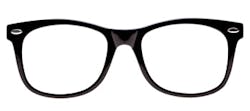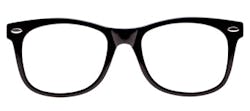Not a tech geek
This crash course offers a glimpse of how technology will impact the hygiene operatory
By Cathy Hester Seckman, RDH
Some of us are technology geeks, and some of us aren't. Some of us jump on every new gadget or protocol and embrace it with open arms. Some of us don't.
However we feel about new technology in dentistry, we owe it to our patients to stay informed and to put new products and philosophies to work. So even if you place yourself firmly in the "technophobe" camp, grit your teeth and keep reading. Remember, you're doing it for your patients.
-------------------------------------------------
Consider reading these articles by Seckman
- Orthodontic tooth movement with clear aligners: seeing results with the invisible
- An author recalls some of her more humorous moments in dentistry
- Motivating teens to better oral care through the use of dental technology
-------------------------------------------------
Here are some intriguing technologies that are, or will be, at our disposal.
Computer software for dentistry is becoming more important with the introduction of electronic health records (EHRs). According to the U.S. Department of Health and Human Services Health Resources and Services Administration, certified EHR programs that meet "meaningful use" criteria are already available, though multiple challenges still exist in matching dentistry with other health-care disciplines through EHRs. Specific recommendations are available at the Health Resources and Services Administration website.1
Hands-free technology in dentistry has unique challenges. Clinicians struggle to maintain a clean environment while dealing with charting and record-keeping. One must either use barriers for all the equipment, or de-glove and re-glove repeatedly during an examination.
One partial answer, which doesn't solve every problem, is voice recognition software. There are programs specifically for medical use that claim 99% accuracy, have customizable macros for frequently-dictated text, and include specific medical terminology. They're also designed to be EHR-compliant. More information about the software is at 1st Dragon, for example.2
Such programs can work well for dictating clinical notes and treatment plans. What happens, though, if you want to enter dental charting? One good answer for this dilemma is a foot-operated mouse, which can be found at www.dentalrat.com and www.boomerthefootmouse.com.
CAD/CAM (computer-assisted design/computer-assisted manufacture) was introduced to dentistry in 1971 by Francois Duret, and the first restoration was manufactured in 1983. In the years since, CAD/CAM systems such as CEREC have come to be used routinely in dental offices to produce crowns, veneers, inlays, and onlays in a single visit using digital photography and 3-D imaging.
Recent advances have allowed CAD/CAM systems to use more materials than just the ceramic blocks needed for restorations, including titanium, titanium alloys, aluminum oxide, and zirconium oxide. As a result, CAD/CAM is increasingly popular in implant dentistry.
Data capture is the first step in manufacturing an abutment, and methods can include 3-D optical systems or laser scans. CAD is then used to design the implant, and CAM systems manufacture it. CAD/CAM has been shown to be more consistent than laboratory-made abutment designs, because CAD software assists the technician, and inaccuracies of traditional waxing and casting are eliminated.3
CAD/CAM is also used in orthodontics. According to a 2013 study, 35% of accredited orthodontic postgraduate programs in the United States and Canada are using digital study models in most cases treated in their programs, and the trend is for increased digital-model use in the future.4
Computerized tomography (CT scanning) was first developed in 1967, and was designed to scan the head only. The technology had been considered too large and expensive for use in dental offices, but the development of cone-beam CT (CBCT) in 1982, which requires just a single scan, paved the way for its use in dentomaxillofacial imaging.5
Today, CBCT is used for dental implant planning, visualization of abnormal teeth, evaluation of the jaws and face, cleft palate assessment, caries and endodontic diagnosis, and diagnosis of dental trauma.6
Dental lasers briefly produce single-color light with coherent waves for an efficient source of energy that can be absorbed by a target tissue. The absorption produces a thermal rise in the tissue, either removing it, ablating it, or deactivating bacteria in it.7
Lasers are used in dentistry for incising, excising, and coagulating oral soft tissue; treating aphthous ulcers and herpetic lesions; sulcular debridement; caries diagnosis (for instance, with a DIAGNOdent); caries removal; tooth preparation; and osseous surgery. Er:YAG lasers have also been used successfully to treat osteonecrosis of the jaw.8
Research is being conducted for new clinical applications, including selective calculus and carious lesion ablation; improvements in tissue evaluation; and laser hardening of enamel.9 A 2013 study done in Brazil, for instance, showed that enamel pretreated with a combination of Er:YAG laser and acidulated phosphate fluoride gel, then exposed to a soft drink, showed lower enamel demineralization than control groups.10
Air polishing has gone underground with the introduction of tips that can reach subgingivally to clean root surfaces. One study showed the technology to be superior to using curettes;11 another found no difference on a microbiological level, but was shown to be more efficient and more acceptable to patients than hand instrumentation.12
Dental endoscopy allows us a direct view into a periodontal pocket to diagnose and treat disease, and the technology has become more accessible in recent years. A dental endoscope provides up to 48x magnification with a fiber-optic camera probe for direct vision subgingivally without surgery.13
Salivary diagnostics is an exciting concept that goes far beyond checking for caries susceptibility and periodontal disease. Salivary tests are available to check DNA, drug use, hormones, and thyroid function. A test for Sjogren's syndrome is being developed14 and cancer-detection salivary testing has been studied.15
At UCLA, researchers commented in a study of salivary biomarkers that "the discovery of saliva-based microbial, immunologic, and molecular biomarkers offers unique opportunities . . . [to utilize] oral fluids to evaluate the condition of both healthy and diseased individuals."16 This has interesting implications for the dental office, since health-care consumers typically see their dentists and hygienists far more often than they see other health professionals. Dental offices may become the go-to places for salivary diagnostics in the not-too-distant future.
CATHY HESTER SECKMAN, RDH, has written on dental topics for 26 years. She speaks on pediatric issues, and works clinically in a pediatric practice. She is also an indexer and a novelist.
References
1. http://www.hrsa.gov/healthit/toolbox/oralhealthittoolbox/meaningfuluse/certifiedproducts.html
2. http://www.1st-dragon.com/Dragon-Medical-Practice-Edition-2-10-User-Pack-p/dmpe2-10pack.htm
3. Med Oral Pathol Oral Cir Bucal. 2009 Mar 1;14 (3):E141-5.
4. Angle Orthod. 2013 Jun 6. [Epub ahead of print] Evaluation of the use of digital study models in postgraduate orthodontic programs in the United States and Canada. Shastry S, Park JH.
5. Cone Beam Computed Tomography in Dentomaxillofacial Imaging http://www.aadmrt.com/static.aspx?content=currents/sukovic_winter_04. Accessed 10/1/13
6. http://www.fda.gov/Radiation-EmittingProducts/RadiationEmittingProductsandProcedures/MedicalImaging/MedicalX-Rays/ucm315011.htm. Accessed 10/1/13.
7. http://www.laserdentistry.org/index.cfm/professionals/Overview%20of%20Lasers. Accessed 10/1/13.
8. Lasers Med Sci. 2010 Jan;25(1):101-13. doi: 10.1007/s10103-009-0687-y. Epub 2009 Jun 19. Surgical approach with Er:YAG laser on osteonecrosis of the jaws (ONJ) in patients under bisphosphonate therapy (BPT). Vescovi P, Manfredi M, Merigo E, Meleti M, Fornaini C, Rocca JP, Nammour S.
9. J Laser Dent 2008;16(Spec Issue):4-10. Fundamentals of Lasers in Dentistry: Basic Science, Tissue Interaction, and Instrumentation. DJ Coluzzi.
10. Lasers Med Sci. 2013 Oct 23. [Epub ahead of print]. Effect of pretreatment with an Er:YAG laser and fluoride on the prevention of dental enamel erosion. Dos Reis Derceli J, Faraoni-Romano JJ, Azevedo DT, Wang L, Bataglion C, Palma-Dibb RG.
11. J Periodontol. 2003 Mar;74(3):307-11. Subgingival plaque removal at interdental sites using a low-abrasive air polishing powder. Petersilka GJ, Tunkel J, Barakos K, Heinecke A, Häberlein I, Flemmig TF.
12. J Periodontol. 2010 Jan;81(1):79-88. doi: 10.1902/jop.2009.090394. Subgingival plaque removal using a new air-polishing device. Moëne R, Décaillet F, Andersen E, Mombelli A.
13. http://www.perioscopyinc.com/perioscopy-technology.php. Accessed 10/1/13.
14. http://www.dentistry.ucla.edu/news/ucla-gets-2.8-million-from-nih-to-develop-saliva-test-to-diagnose-sjogrens-syndrome.
15. Clin Lab Med. 2009 Mar; 29(1):71-85. doi: 10.1016/j.cll.2009.01.004. Salivary biomarkers for the detection of malignant tumors that are remote from the oral cavity. Bigler LR, Streckfus CF, Dubinsky WP.
16. Clin Microbiol Rev. 2013 Oct;26(4):781-91. doi: 10.1128/CMR.00021-13. Salivary biomarkers: toward future clinical and diagnostic utilities. Yoshizawa JM, Schafer CA, Schafer JJ, Farrell JJ, Paster BJ, Wong DT.

